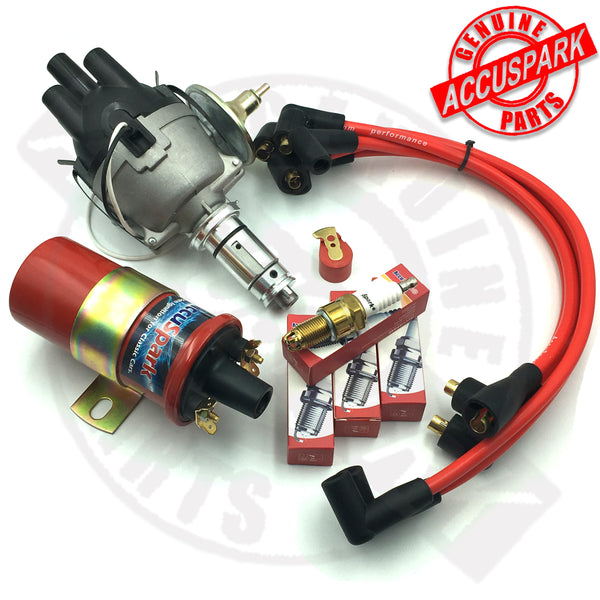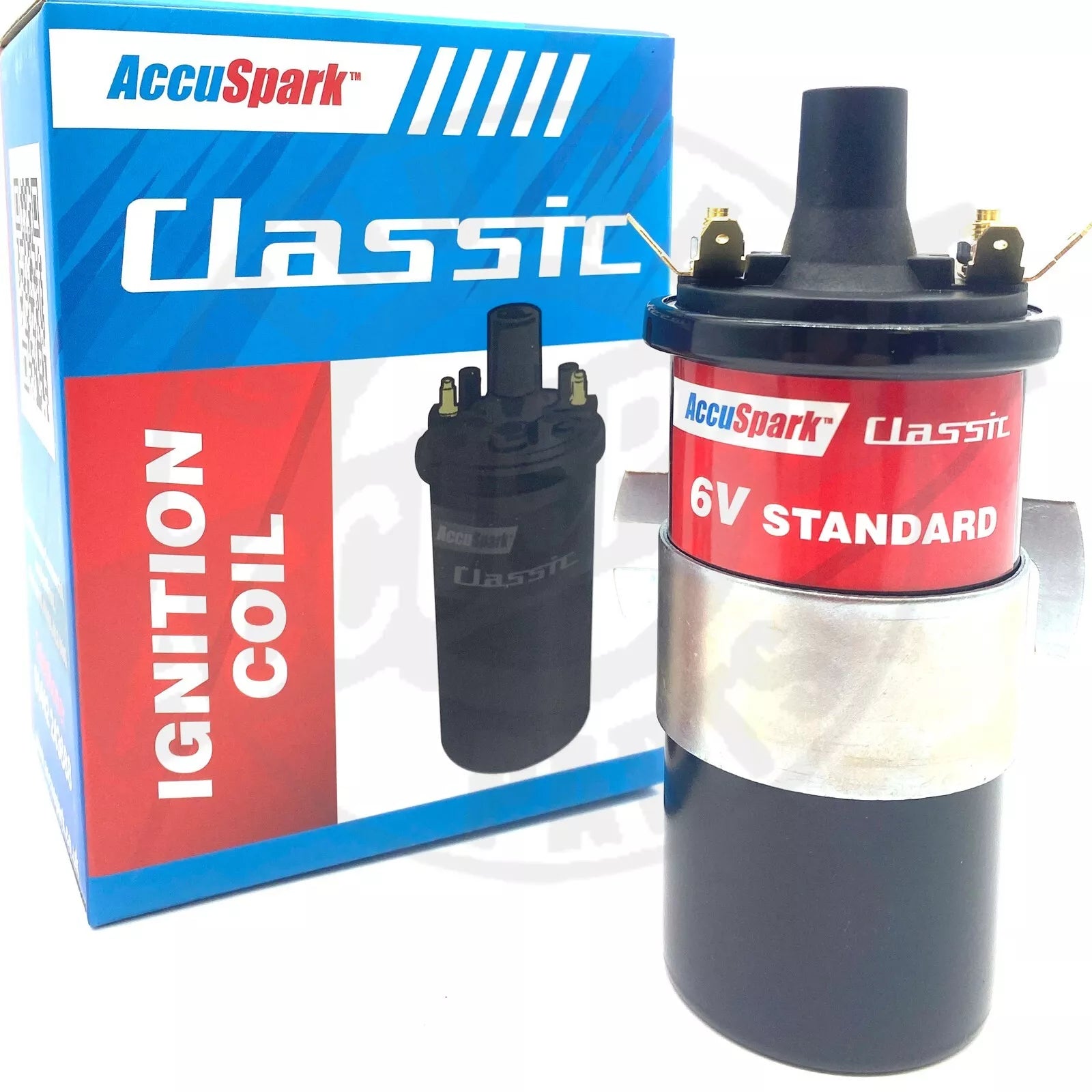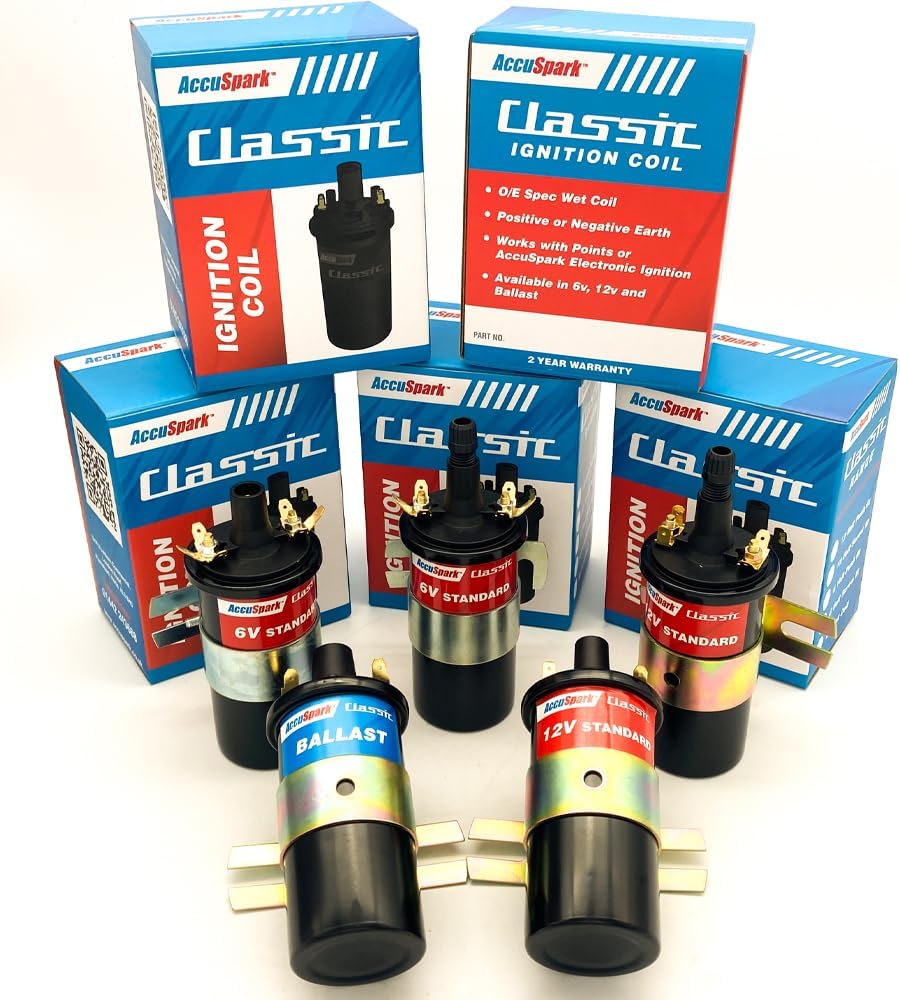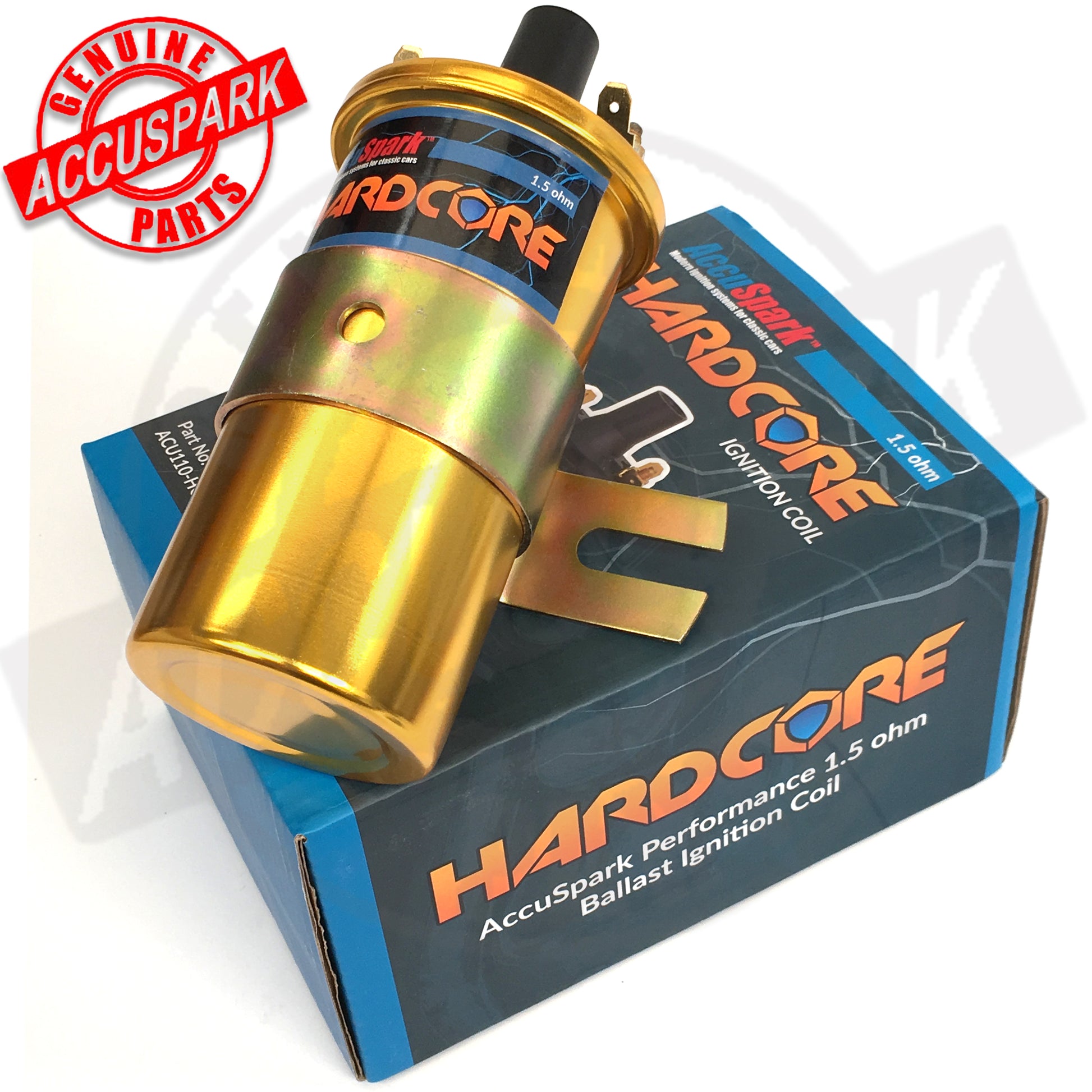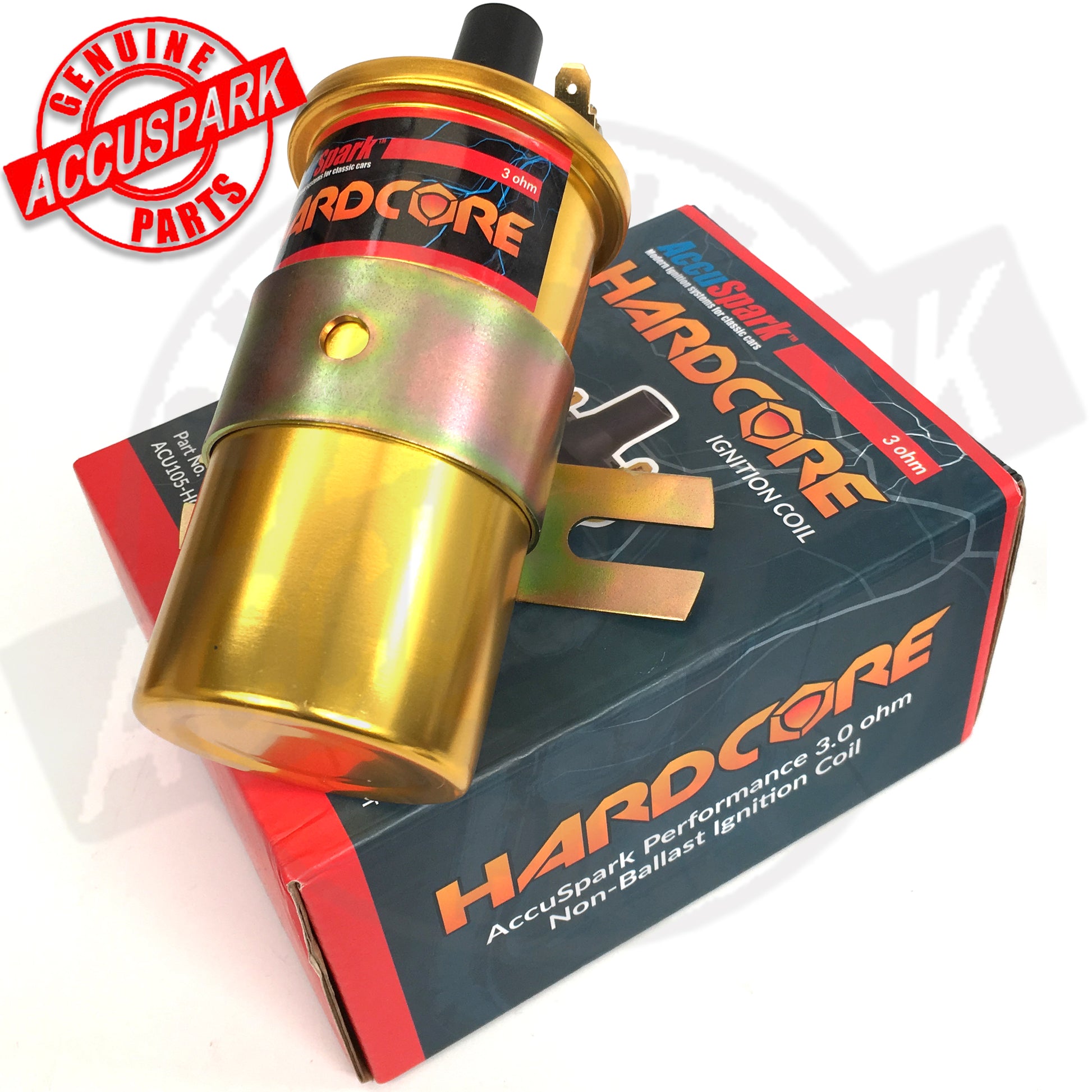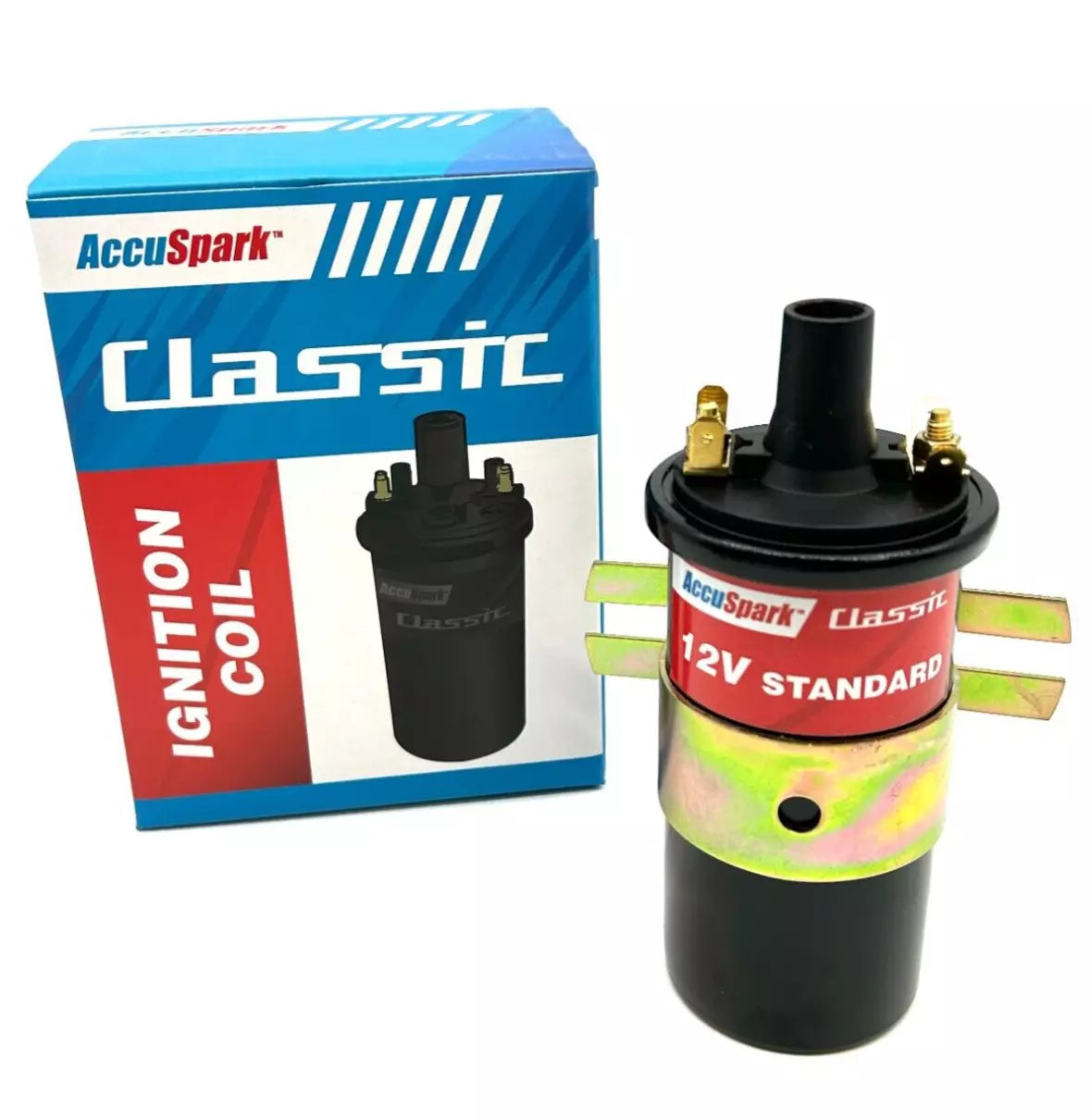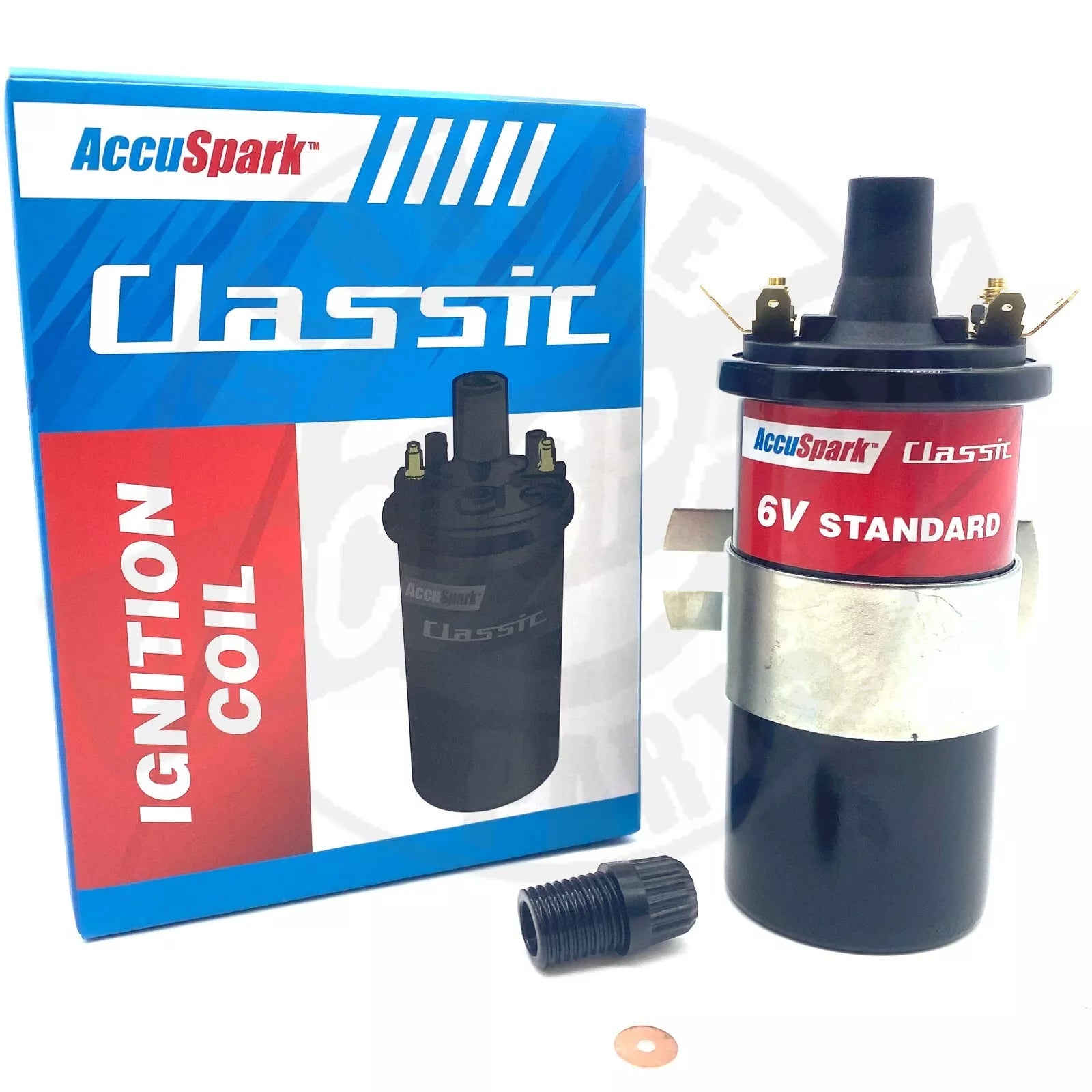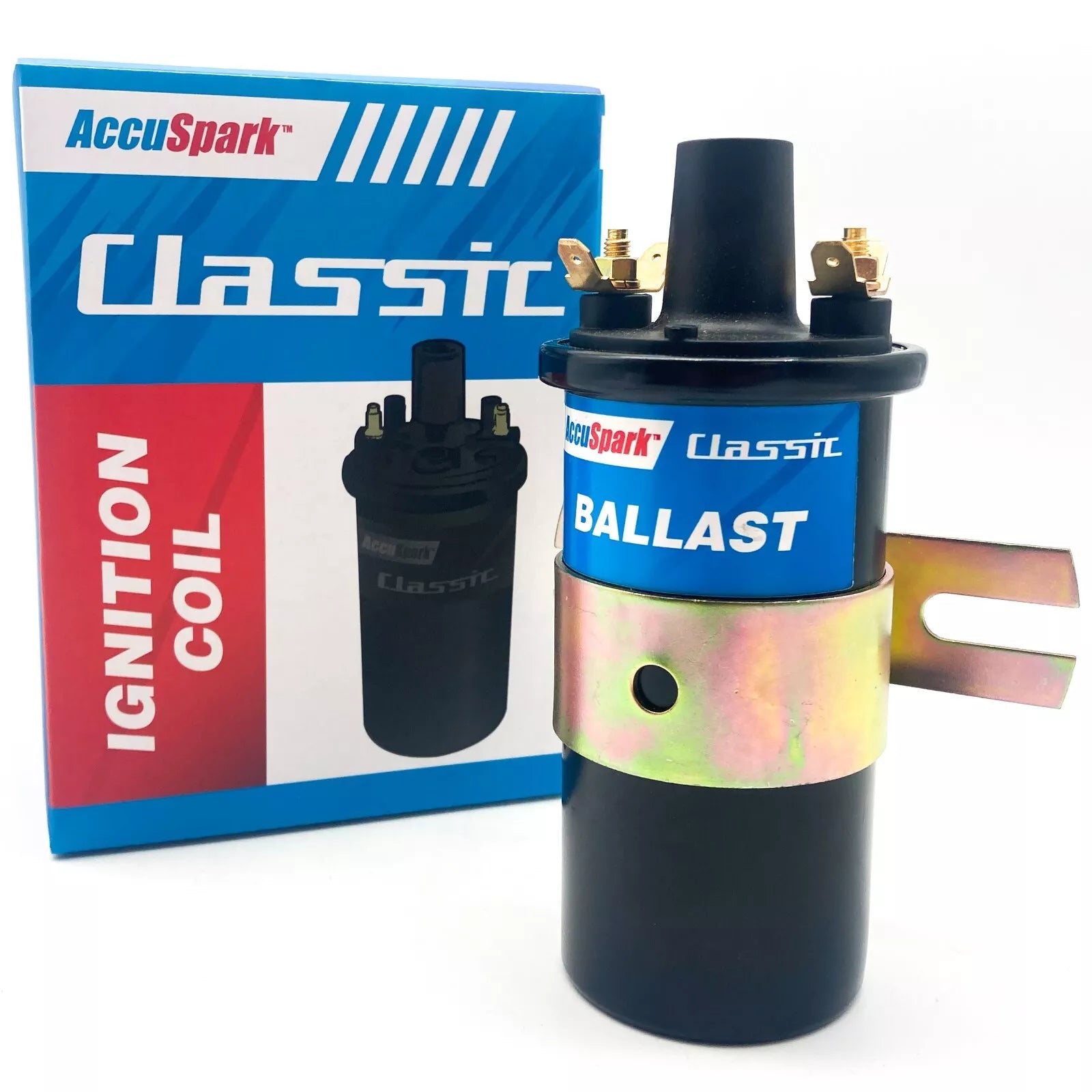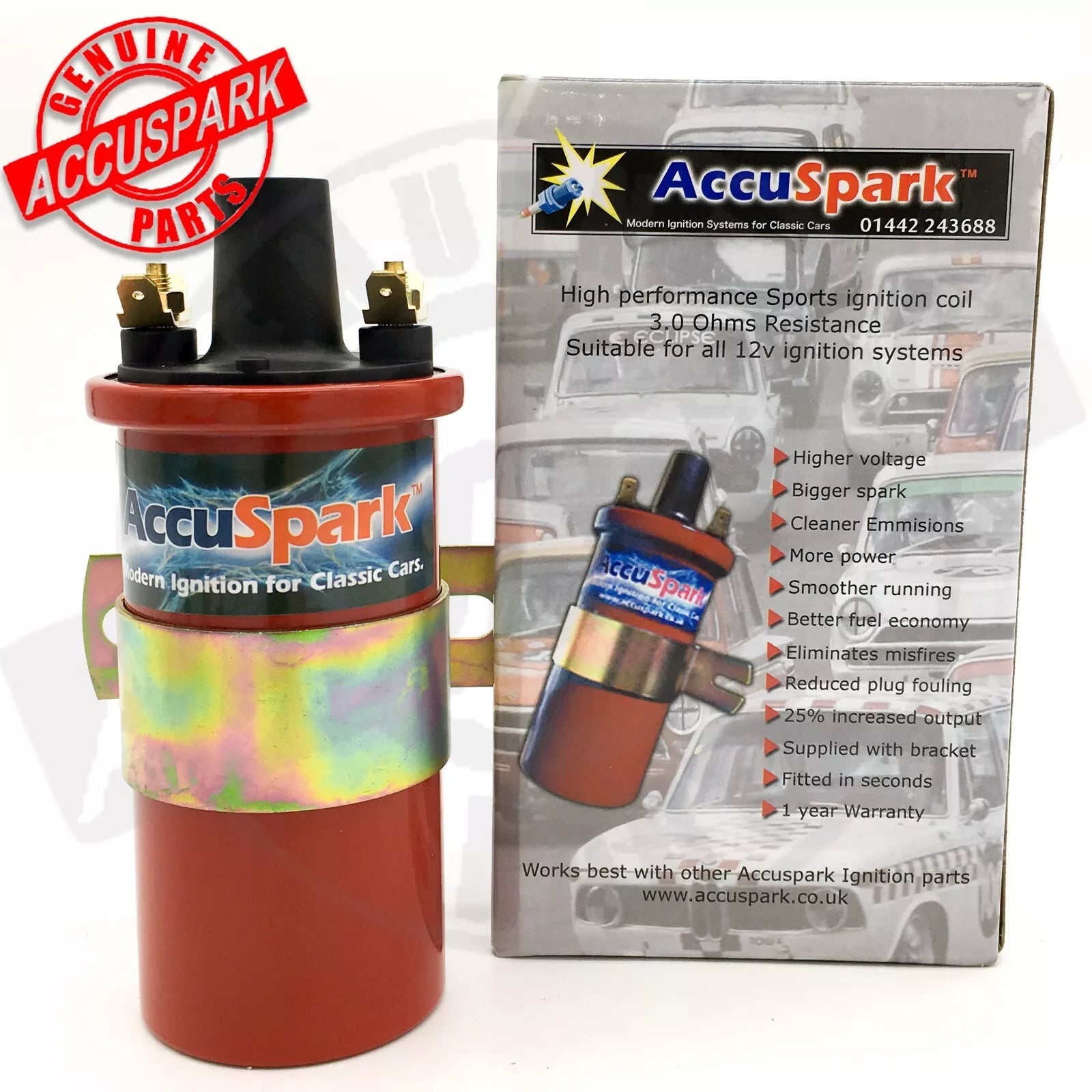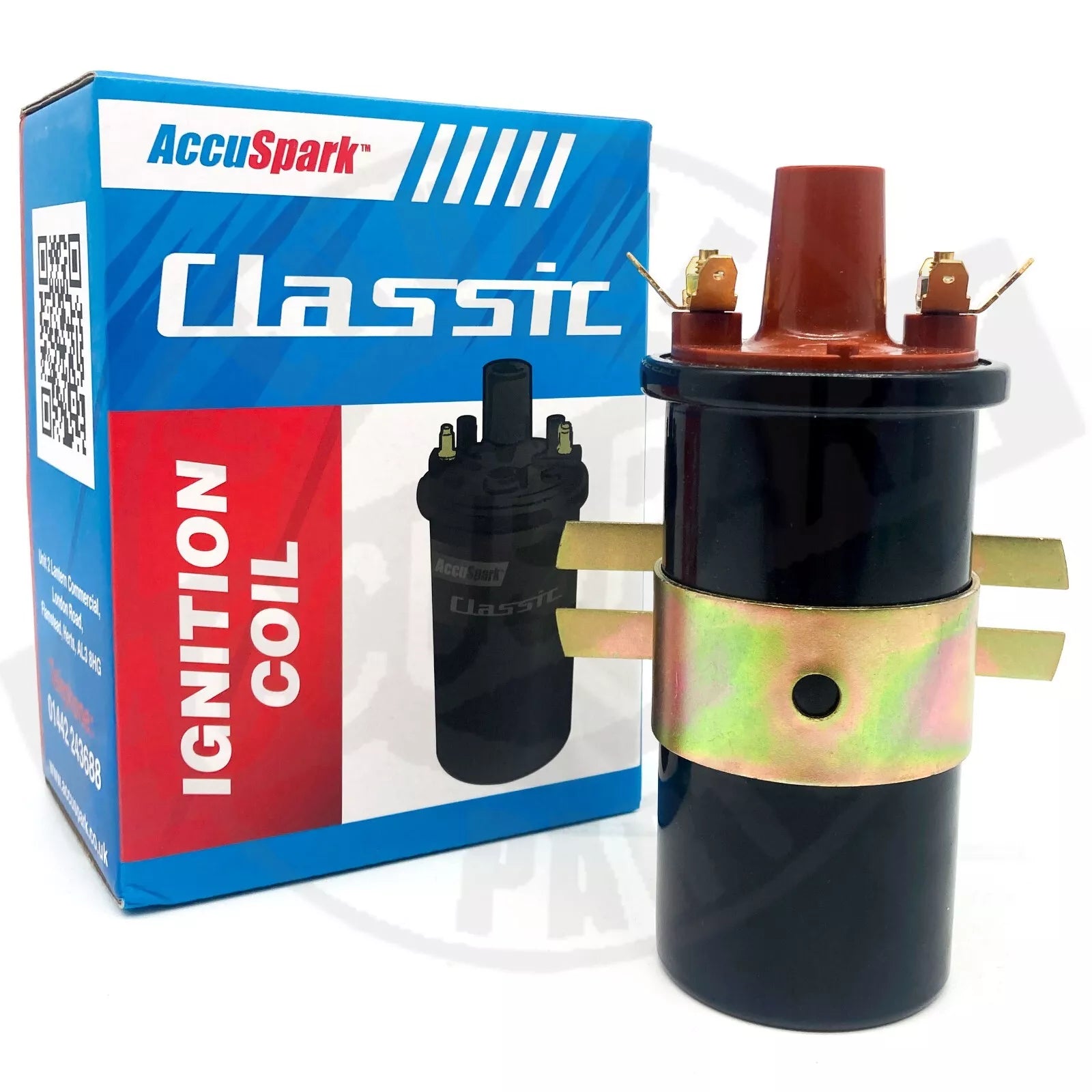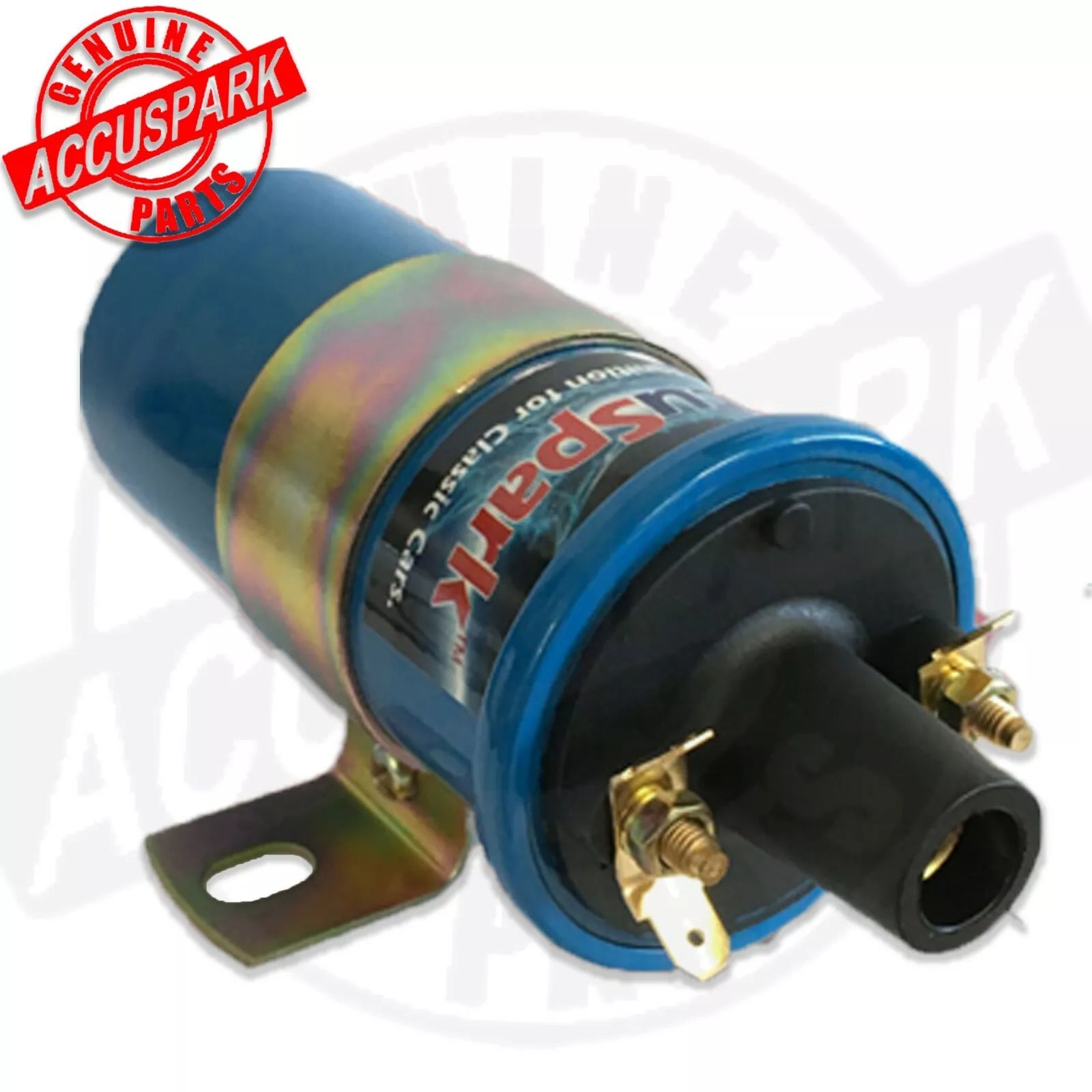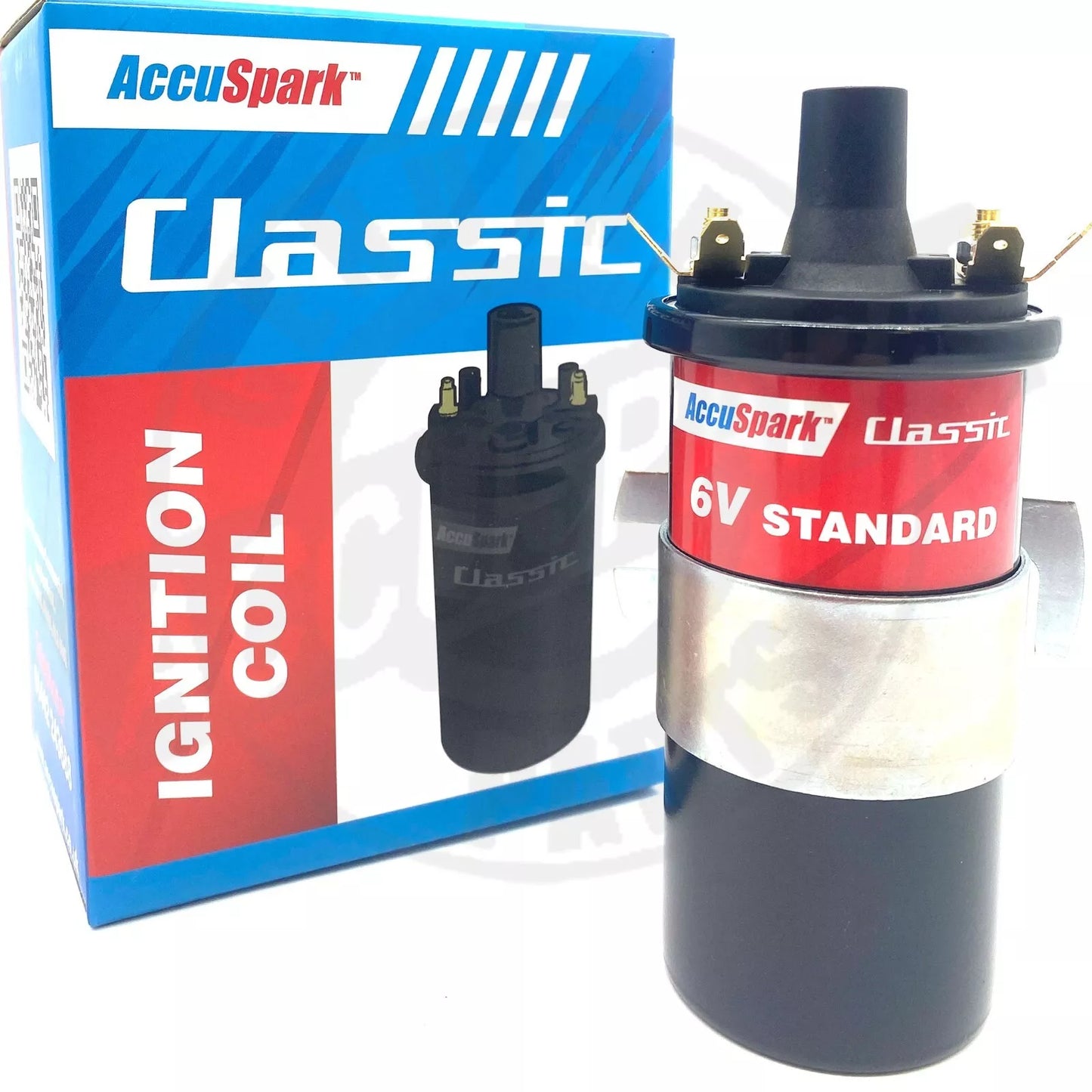
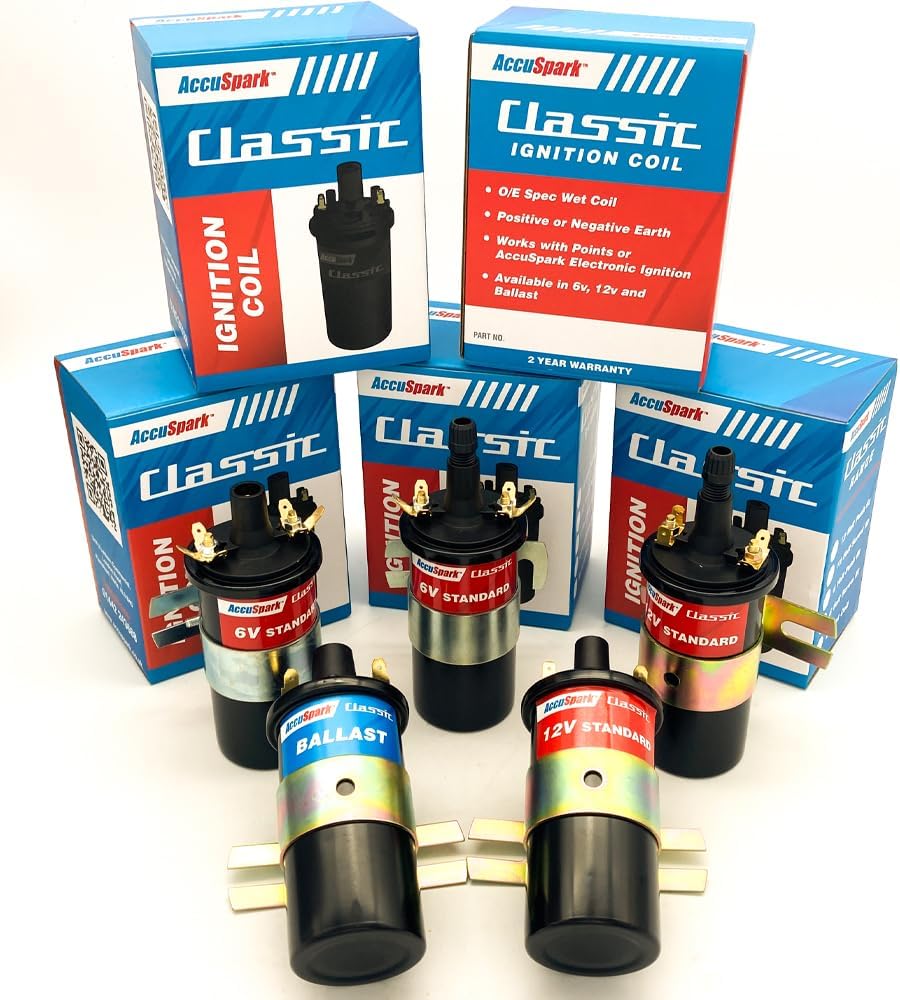

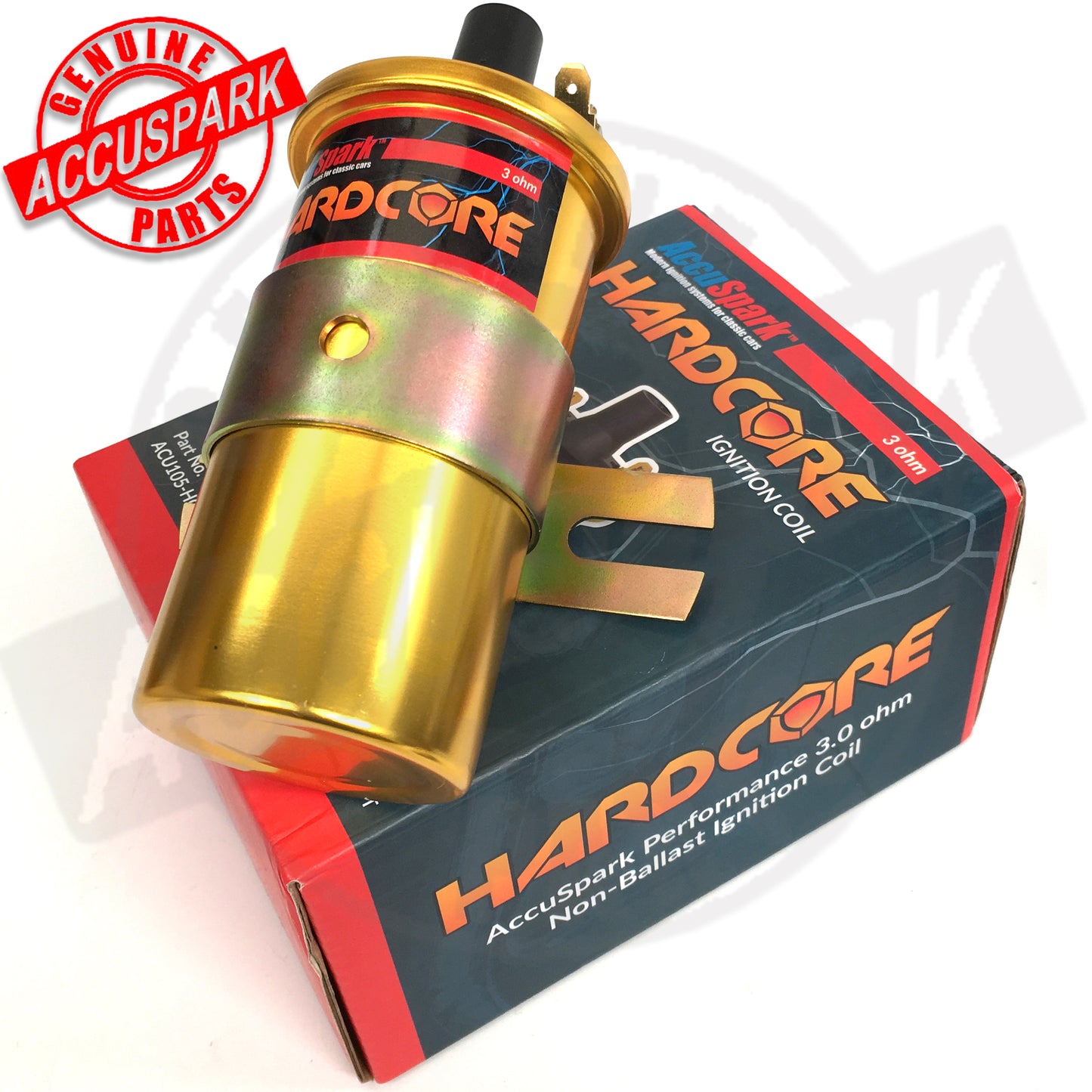
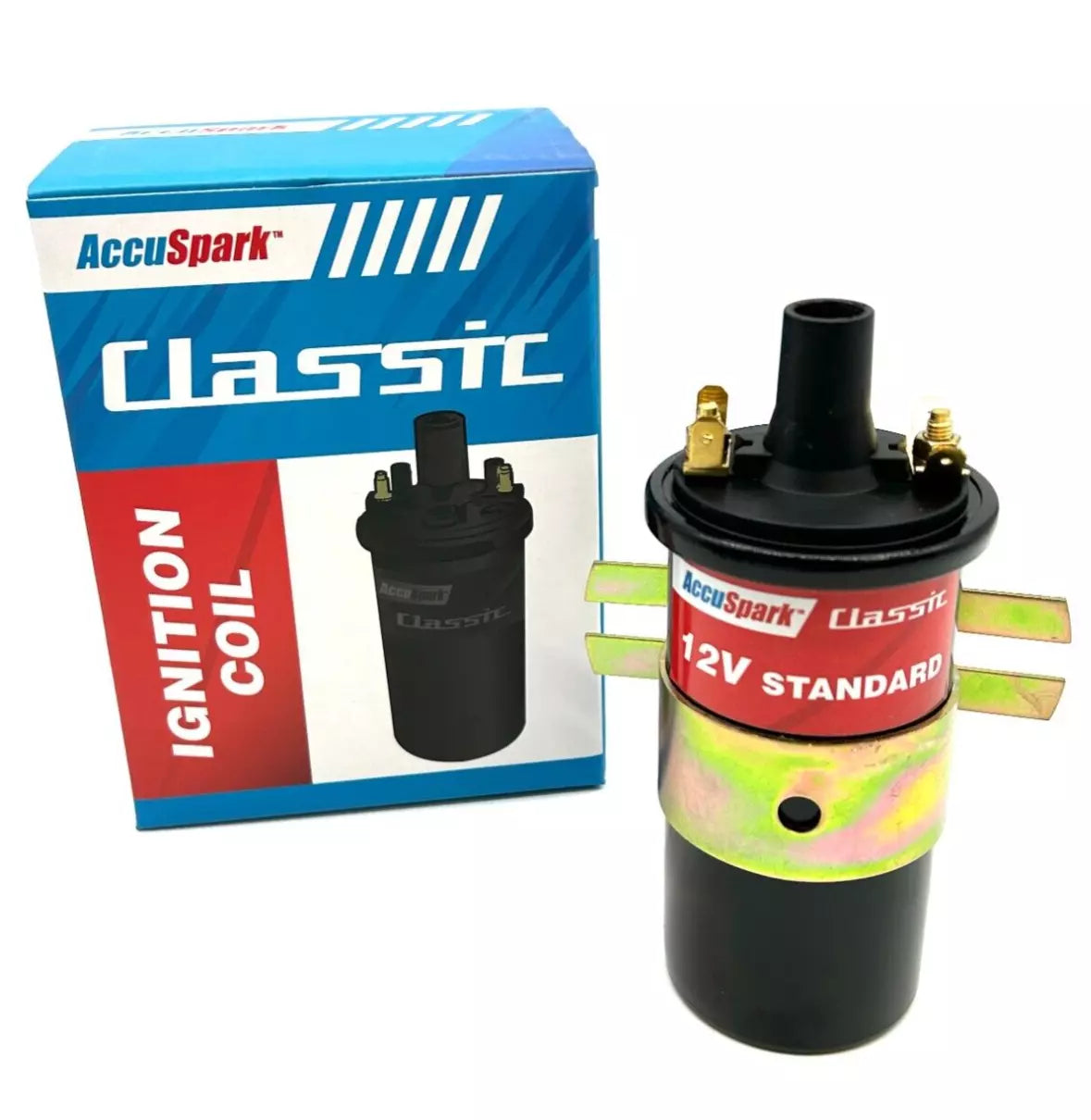
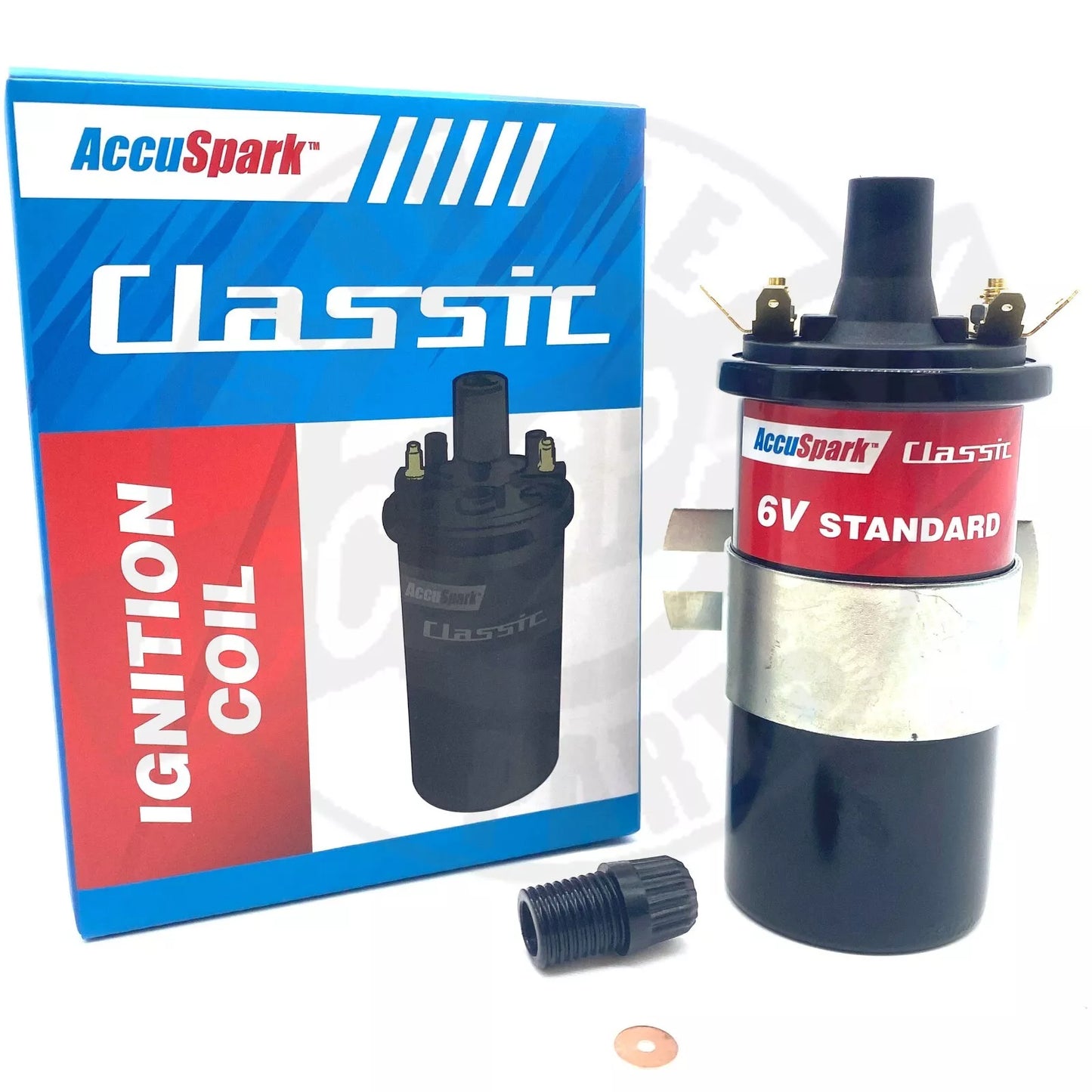

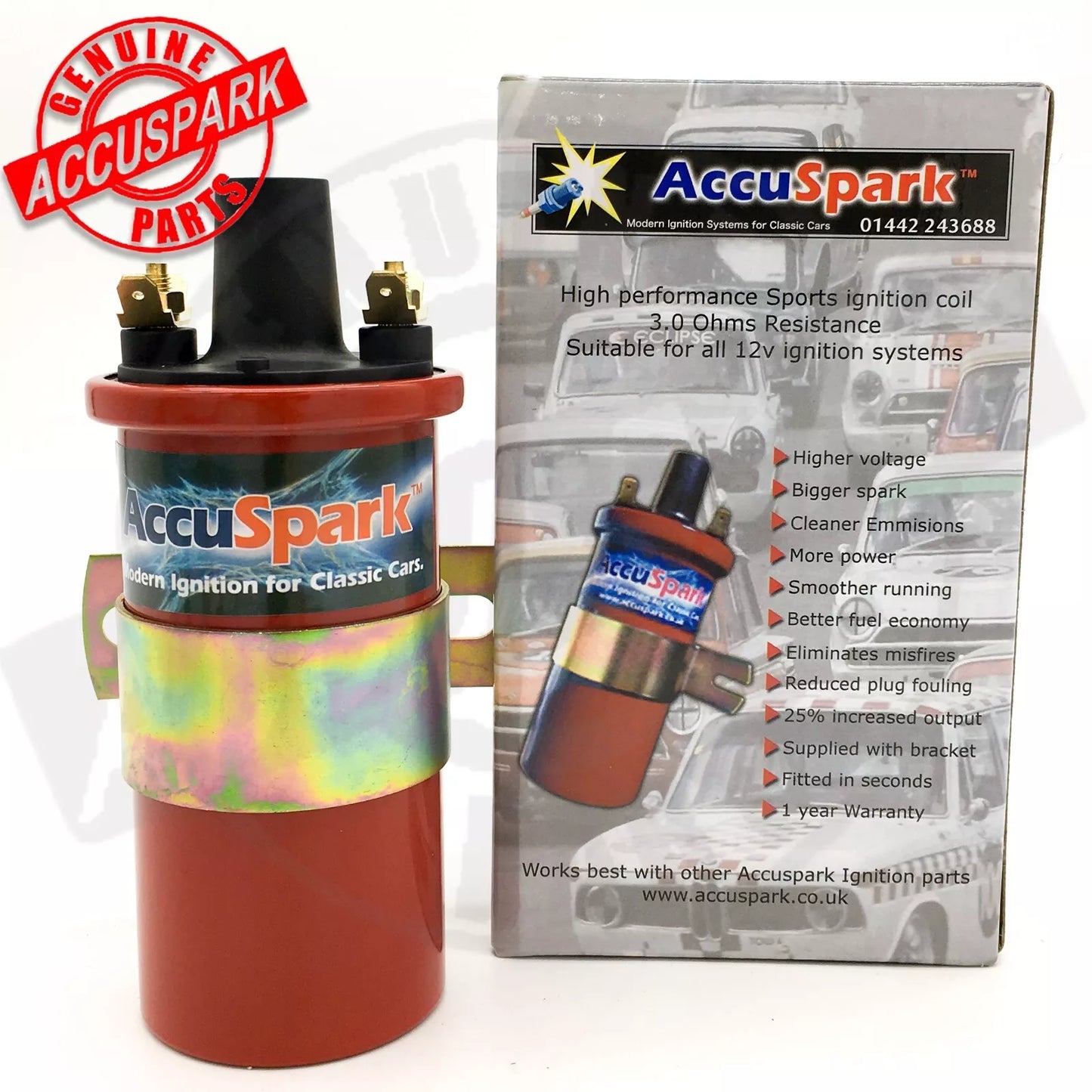
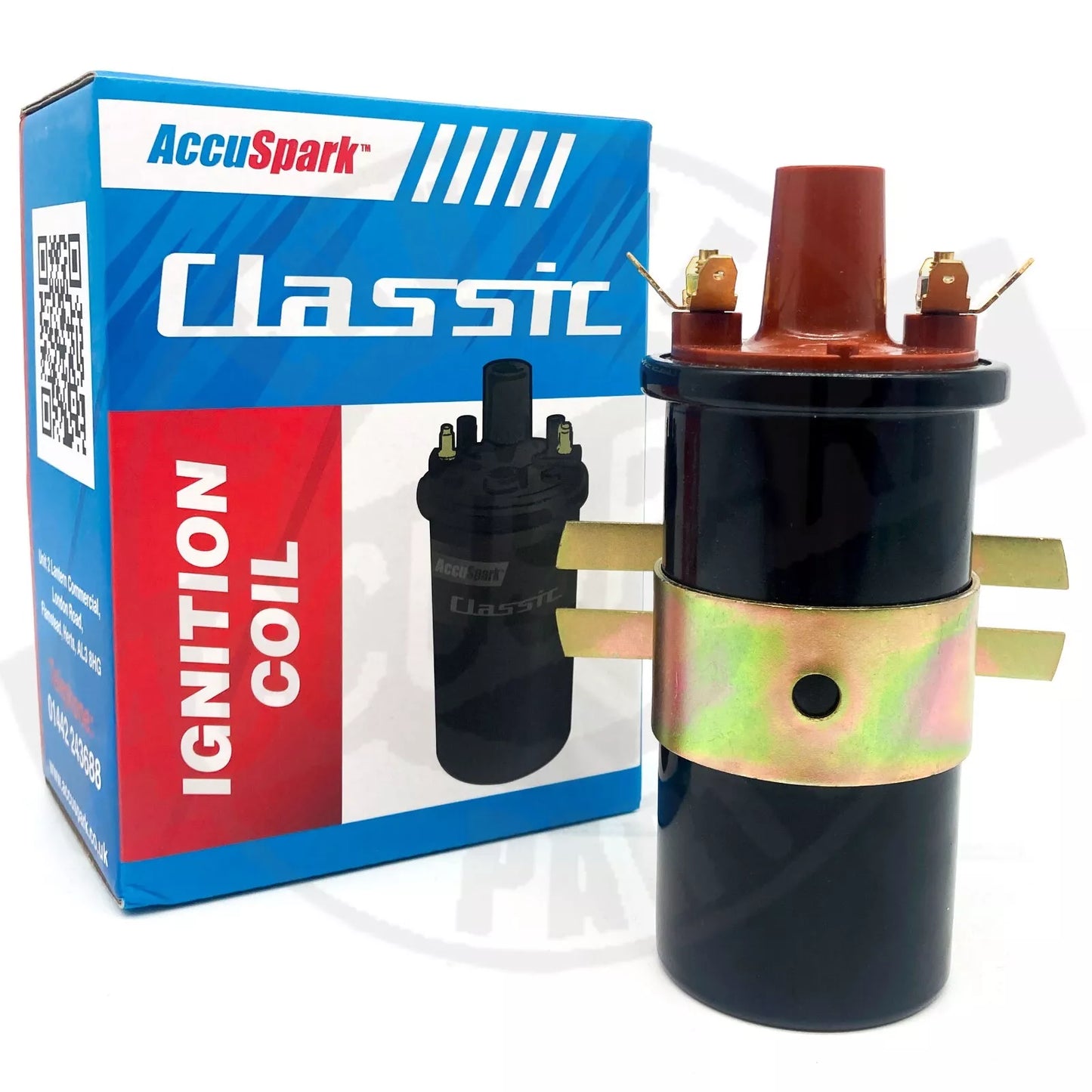

AccuSpark coils recommended use
| Model | Appearance | Type | Typical Voltage Output | Best For | Key Benefits |
|---|---|---|---|---|---|
| AccuSpark Classic Black – ACU101 | Black, oil-filled | Standard road use | ~20–25 kV | Best for standard road cars and daily drivers. Ideal where originality and reliability are the priority, suited to untuned or lightly used classics. | Period-correct look, reliable performance, direct replacement for OEM coils |
| AccuSpark Sports Red – ACU105 | Red, oil-filled | Uprated sports coil | ~30–35 kV | Best for mildly tuned engines and spirited driving. Provides a stronger spark for improved combustion, throttle response, and engines with higher compression or wider plug gaps. | Stronger spark for better combustion, supports wider plug gaps |
| AccuSpark Hardcore – HC105 | Black, epoxy resin-filled | High-performance | ~35–40 kV | Best for motorsport, off-road, or harsh conditions. Built to withstand heat, vibration, and sustained high RPM, offering maximum durability and consistent performance. | Rugged, vibration-resistant, consistent spark at high RPM |
Notes:
- All three coils are designed for negative or positive earth systems.
- Compatible with both points-based and most electronic ignition systems.
- Voltage outputs are approximate and may vary depending on ignition setup.
The difference between Ballast and non Ballast coils.
ALL TESTS ASSUME COIL IS CORRECTLY FITTED
Non-Ballast Ignition Coil:
- No Ballast Resistor Used.
- Voltage at Coil: Designed to run at full 12 volts continuously.
- No Start Bypass Needed: It’s built to handle the full voltage without damage.
- Common In: Most classic cars up to the 1970s.
Ballast Ignition Coil:
- Used with a Ballast Resistor (or a resistance wire).
- Voltage at Coil: Normally runs at 6 to 9 volts during engine operation.
- Starting Boost: During startup, the ballast resistor is bypassed so the coil gets a full 12 volts to help with cold starts.
- Purpose of Ballast Resistor: Limits current after starting to protect the coil and prolong its life.
- Common In: Fords from 1968, many Triumph models, and widely used from the early 1980s.
⚠️ If you remove the ballast resistor and run 12V full-time to a ballast coil, it will overheat and eventually fail.
How to test coil type :
Set you volt meter to OHM and read between the + and - terminals with no other wires connected
-
Resistance Check (Primary winding):
- Ballast Coil: ~1.5 ohms or higher
- Non-Ballast Coil: ~3 ohms (higher resistance)
- Low resistance coil for factory electronic systems ~0.6 -1.1 ohms
- Labeling: Some coils are marked “Use with Ballast Resistor” or “12V” (non-ballast).
How to test if your ignition has a hidded resistor:
1. Turn ignition ON.
2. Remove all wires from negative side of coil
3. Manually ground the coil negative terminal (–) to earth . Use a short jumper wire to a clean chassis point.
This simulates the contact breaker points being closed.
It puts the coil under load, just like when the engine is running
4. Now measure voltage at the coil + terminal (red probe on coil +, black probe to body earth).
~12V or near Battery voltage = Non-ballast system
~6–9V = Ballast system = ballast system
5. Remove the earth jumper from coil – after the test so you don’t overheat the coil.
Why this matters:
Without grounding the coil negative, the circuit is “open,” and the coil may show near battery voltage even on a ballast system.
By grounding it, you replicate real operating conditions and get the true voltage drop across the ballast resistor.
